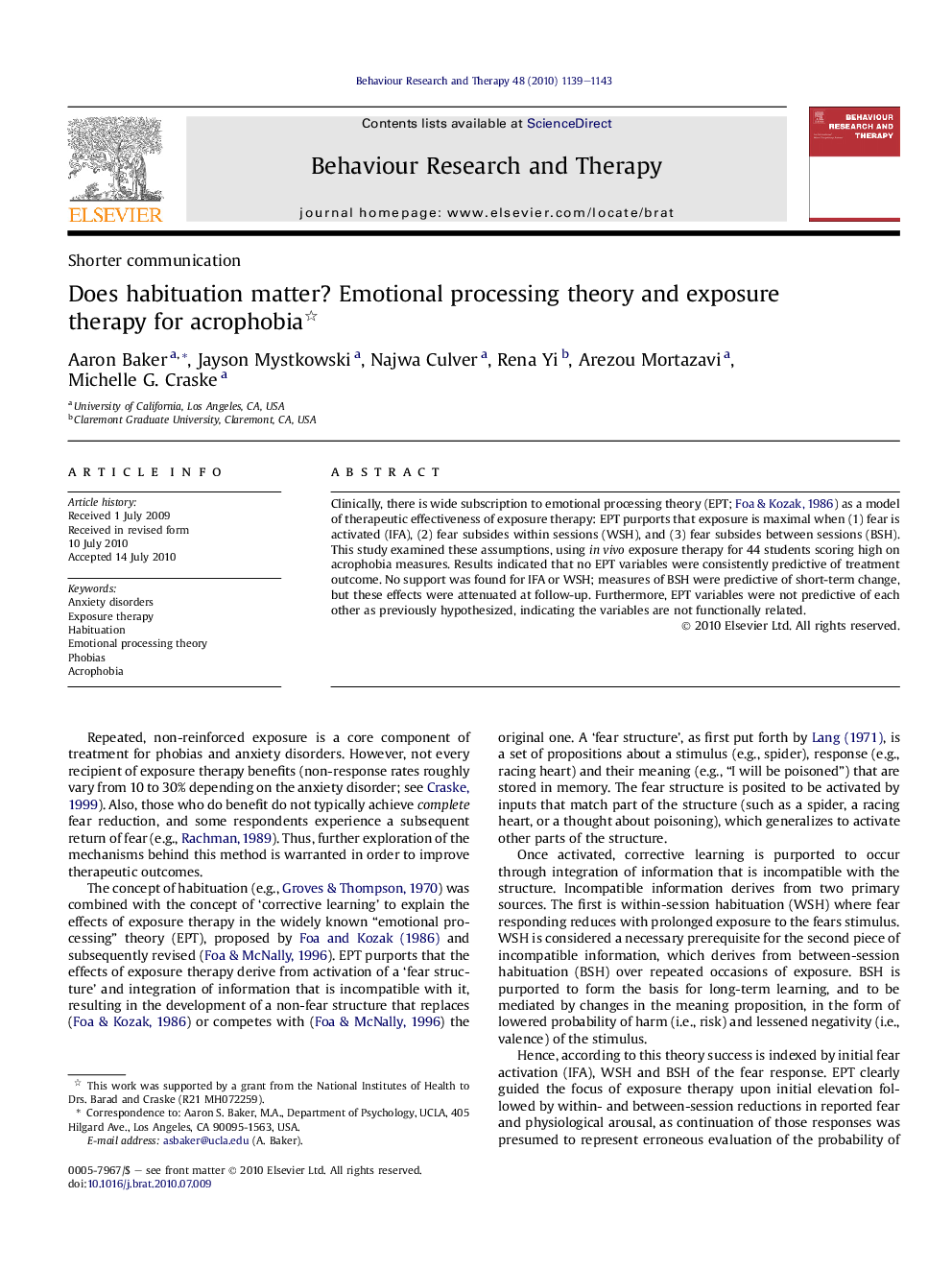| Article ID | Journal | Published Year | Pages | File Type |
|---|---|---|---|---|
| 10444715 | Behaviour Research and Therapy | 2010 | 5 Pages |
Abstract
Clinically, there is wide subscription to emotional processing theory (EPT; Foa & Kozak, 1986) as a model of therapeutic effectiveness of exposure therapy: EPT purports that exposure is maximal when (1) fear is activated (IFA), (2) fear subsides within sessions (WSH), and (3) fear subsides between sessions (BSH). This study examined these assumptions, using in vivo exposure therapy for 44 students scoring high on acrophobia measures. Results indicated that no EPT variables were consistently predictive of treatment outcome. No support was found for IFA or WSH; measures of BSH were predictive of short-term change, but these effects were attenuated at follow-up. Furthermore, EPT variables were not predictive of each other as previously hypothesized, indicating the variables are not functionally related.
Related Topics
Health Sciences
Medicine and Dentistry
Psychiatry and Mental Health
Authors
Aaron Baker, Jayson Mystkowski, Najwa Culver, Rena Yi, Arezou Mortazavi, Michelle G. Craske,
